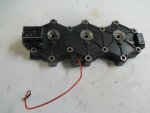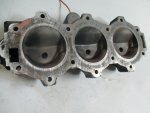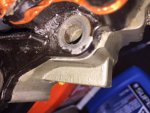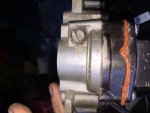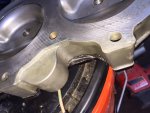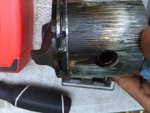DudeAbides
Seaman
- Joined
- Jun 20, 2015
- Messages
- 54
I swapped out my piston and rings. That was fun. Started up my 1989 85HP and I am getting water in all 3 cylinders. The head gasket is new, As is the exhaust gaskets.
I guess it's possible that I didn't install them perfectly?
Does anyone recommend RTV in addition to the gasket, or is that not a good idea?
I also noticed that the head appears to be either replaced or machined or both. The thing that I am curious about is that the rectangular passage at the bottom of the head and cylinder don't match up perfectly. Anyone think this may be an issue?
I guess it's possible that I didn't install them perfectly?
Does anyone recommend RTV in addition to the gasket, or is that not a good idea?
I also noticed that the head appears to be either replaced or machined or both. The thing that I am curious about is that the rectangular passage at the bottom of the head and cylinder don't match up perfectly. Anyone think this may be an issue?






















